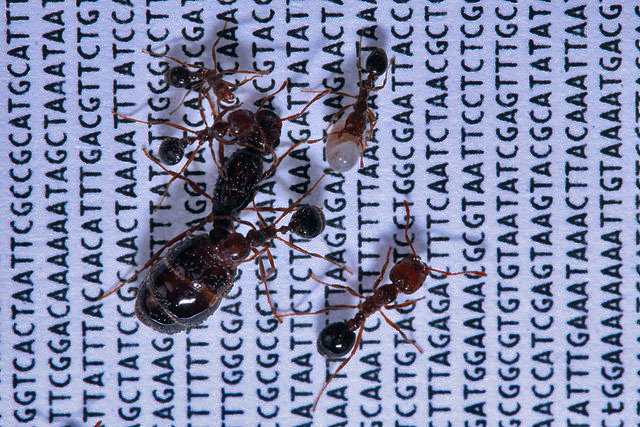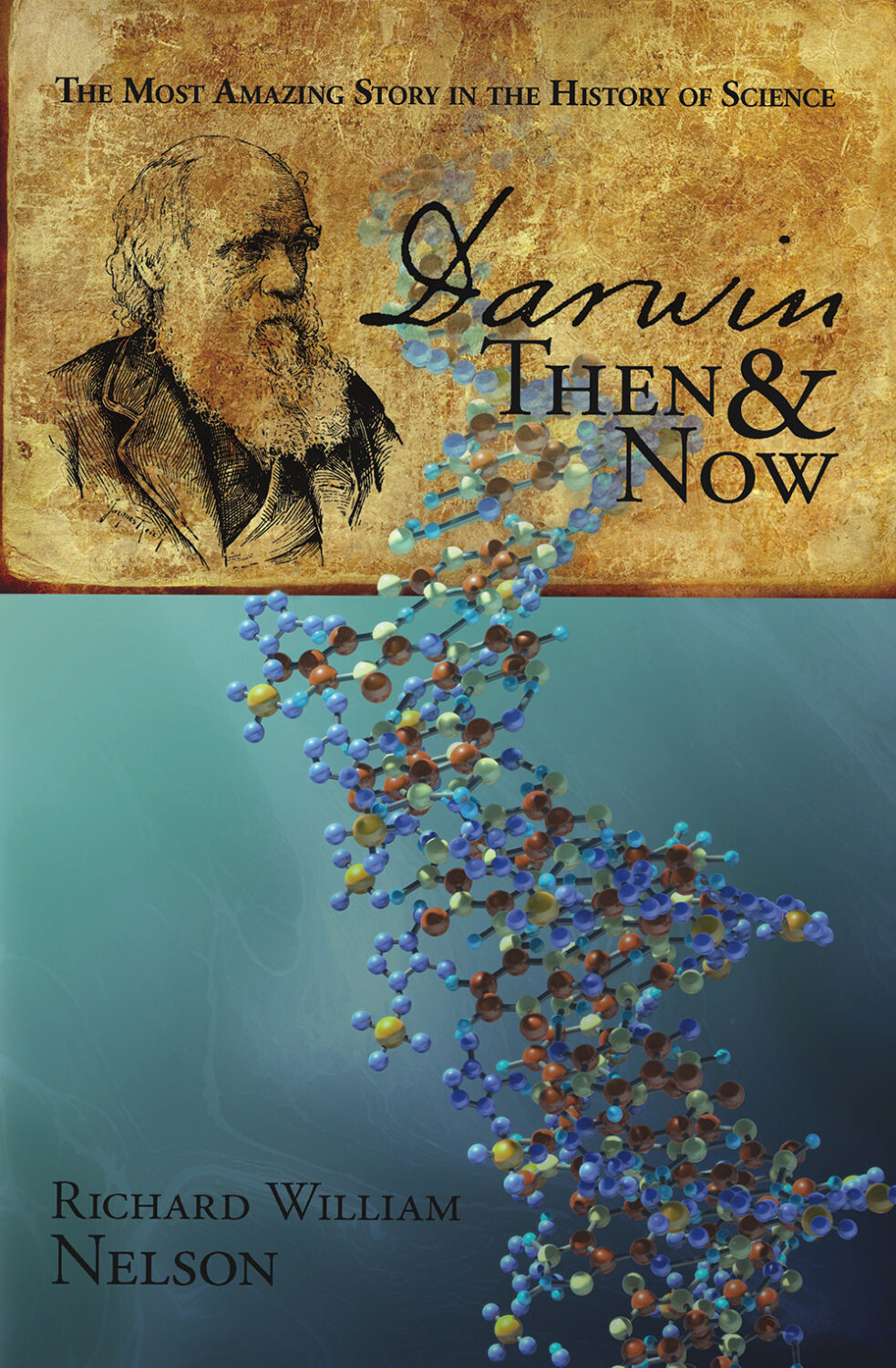 The behavioral evolution in the red fire ant species, which has two distinct types of colonies —one with a single queen and one with multiple queens —has long puzzled biologists. An invisible border seems to exist between the two. The male ants quickly destroy the Queen ants that happen to wander between colonies. To understand what evolutionary mechanisms might be at play, molecular scientists have recently turned to the genome.
The behavioral evolution in the red fire ant species, which has two distinct types of colonies —one with a single queen and one with multiple queens —has long puzzled biologists. An invisible border seems to exist between the two. The male ants quickly destroy the Queen ants that happen to wander between colonies. To understand what evolutionary mechanisms might be at play, molecular scientists have recently turned to the genome.
At Queen Mary University of London, a team of biochemists led by Rodrigo Pracana (pictured below) sequenced the whole genome in both colony types to examine the genetic difference between the two types of colonies – SB and Sb. Surprisingly, rather than finding “slight, successive changes” as predicted by Charles Darwin’s theory of evolution, they discovered the two genes to be “highly divergent” from each other.
Behavioral Evolution Chromosomes
The two colonies are considered genetic variants of the same species, Solenopsis invicta. Of the red ant’s 16 chromosomes, containing more than 500 genes, these variants have been demonstrated to determine whether the colony will have only one or up to dozens of queens in the colony.
Of interest, SB and Sb share a similar pair of sex chromosomes, a supergene region known as “social chromosomes,” and only minor genetic differences between these were predicted since natural selection only acts by “finely graduate… slight, successive changes.”
Evolution through gradual steps over long periods of time is the foundation of Charles Darwin’s theory of evolution. In describing the actions of natural selection, in The Origin of Species (1859), Darwin selected the phrase “Natura non facit saltum’’ – a Latin phrase meaning that nature makes no leaps.
In applying Darwin’s theory, modern scientists expected to discover evidence of natural selection advancing biological evolution incrementally, leaving molecular “evolutionary strata” – analogous to geological strata developing uniformly over long periods of time.
However, in Pracana’s paper entitled “The fire ant social chromosome supergene variant Sb shows low diversity but high divergence from SB” published in the journal of Molecular Ecology (2017), the team unexpectedly discovered that within these “social chromosomes” of eight SB males and eight Sb males –
“We find no evidence of ‘evolutionary strata’ with different levels of divergence.”
 The long-anticipated evidence for evolution in the red fire ant genome sequence between colonies was missing. In a February 20, 2016, interview published on Phys.org entitled “Scientists explore the evolution of a ‘social supergene’ in the red fire ant,” Yannick Wurm (pictured left), the corresponding research team member, further highlighted the dilemma –
The long-anticipated evidence for evolution in the red fire ant genome sequence between colonies was missing. In a February 20, 2016, interview published on Phys.org entitled “Scientists explore the evolution of a ‘social supergene’ in the red fire ant,” Yannick Wurm (pictured left), the corresponding research team member, further highlighted the dilemma –
“We found that the two versions of the chromosome differ homogeneously over the entire length of the supergene.”
In the place of Darwin’s “finely graduated… slight, successive changes,” behavioral evolution chromosomes, SB and Sb, differ completely, with no transitional links between SB and Sb. Where evidence for molecular evolution was predicted by the theory, none could be detected.
Rather than demonstrating the predictive power of Darwin’s theory, evidence from the red fire ant genome demonstrates that Darwin was simply wrong. This evidence, however, was not available before the genomic revolution.
Centenary Celebration
Predicting the effect of an unknown genomic revolution on Darwin’s theory during the mid-twentieth century was only science fiction.
Gaining increasing confidence with a theory of evolution, the who’s who in the evolution industry, Julian Huxley, Ernst Mayr, George Gaylord Simpson, Louis Leaky, Theodosius Dobzhansky, G. Ledyard Stebbins, Hermann J. Muller, Edmond B. Ford, and Conrad. H. Waddington proudly paraded their rising star at the Darwin Centenary Celebration (pictured right) held at the University of Chicago in 1959.
Julian Huxley, the grandson of “Darwin’s Bulldog,” declared that evolution is no longer just a theory. It is a fact, like the fact that the earth goes around the sun.”
The key driving force of the theory of evolution, then known as the modern synthesis, had been championed by H. J. Muller – a theory that merged genetic mutations with Darwin’s natural selection. In a Scientific American (1928) article entitled “New Discovery Speeds Up Evolution,” Muller predicted –
“Evolutionary changes, or mutations, can be produced 150 times as fast by the use of X-rays as they can be by ordinary processes of nature.”
Genomic Revolution
By the late twentieth century, however, Muller’s X-rayed fruit flies were still fruit flies – if not killed by genetic mutations- and centenary celebrants began noticing problems, expressing doubts.
Today, the US Centers for Disease Control (CDC) lists hundreds of human diseases caused by genetic mutations. Not one genetic mutation is known to be beneficial. As the red fire ant demonstrates, the evolutionary industry is desperately searching for a new driver and theory of evolution.
The genomic revolution is driving the once-popular modern synthesis model into extinction – and is increasingly being replaced by even more abstract epigenetic models of evolution.
Natural Selection Erosion
Critics of Darwin’s natural selection theory during the twentieth century were numerous, even within the halls of the evolutionary sciences. Darwin’s theory “may be little more than a truism to state that the individuals that are best adapted to survive have a better chance of surviving than those not so well adapted to survive,” according to Thomas Huxley.
Conrad H. Waddington (pictured right) of Edinburgh University agrees with Huxley –
“There, you do come to what is, in effect, a vacuous statement: Natural selection is that some things leave more offspring than others; and you ask, which leave more offspring than others; and it is those that leave more offspring, and there is nothing more to it than that.”
Salvage Mission
Since the evidence from molecular biology to salvage the theory of evolution has failed to materialize, as has the fossil record and embryology, this past November, in an effort to salvage a united pathway to a new theory of evolution, the Royal Society convened a conference of leading evolutionary scientists entitled “New trends in evolutionary biology: biological, philosophical and social science perspectives.” According to the Royal Society,
“Developments in evolutionary biology and adjacent fields have produced calls for revision of the standard theory of evolution, although the issues involved remain hotly contested.”
What new theory emerged? None. A salvage theory for the evolution industry is increasingly emerging as an elusively distant dream. Early during the convention, Kevin Laland, one of the event organizers, made the best of the inescapable tension –
“I think it’s going quite well. It hasn’t gone to fisticuffs yet.”
Genesis
 Despite a flood of challenges since the publication of The Origin of Species, with more than 150 years of unprecedented scientific efforts in the history of mankind to prove otherwise, the evidence in nature remains compatible with the Genesis record written by Moses.
Despite a flood of challenges since the publication of The Origin of Species, with more than 150 years of unprecedented scientific efforts in the history of mankind to prove otherwise, the evidence in nature remains compatible with the Genesis record written by Moses.
From the perspective of Ernest Rutherford (pictured right), the father of nuclear physics during the Scientific Revolution,
“That which is not measurable is not science.”
Since the genetic evidence points to divergence rather than Darwin’s “slight successive” evolutionary changes, the concept of behavioral evolution is not a scientifically valid theory.
Evidence from the behavioral sciences to validate the theory of evolution scientifically remains speculative.
Behavioral Evolution in the Red Fire Ant is a Behavior article.
Darwin Then and Now is an educational resource on the intersection of evolution and science, highlighting the ongoing challenges to the theory of evolution.
Move On
Explore how to understand twenty-first-century concepts of evolution further using the following links –
-
- The Understanding Evolution category showcases how varying historical study approaches to evolution have led to varying conclusions. Subcategories include –
- Studying Evolution explains how key evolution terms and concepts have changed since the 1958 publication of The Origin of Species.
- What is Science explains Charles Darwin’s approach to science and how modern science approaches can be applied for different investigative purposes.
- Evolution and Science feature study articles on how scientific evidence influences the current understanding of evolution.
- Theory and Consensus feature articles on the historical timelines of the theory and Natural Selection.
- The Biography of Charles Darwin category showcases relevant aspects of his life.
- The Glossary defines terms used in studying the theory of biological evolution.
- The Understanding Evolution category showcases how varying historical study approaches to evolution have led to varying conclusions. Subcategories include –



